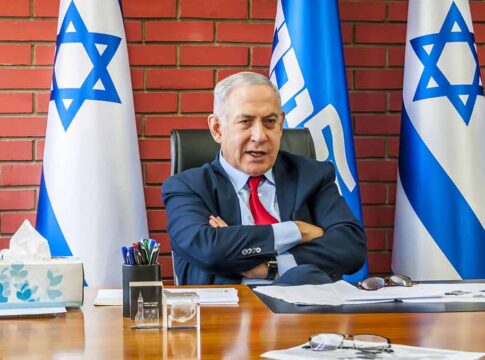Israel has launched an unprecedented attack on Iran’s Natanz nuclear facility, destroying multiple floors of its underground infrastructure, including the main hall containing centrifuges for uranium enrichment. Israel claims the attack was necessary to counter Iran’s nuclear threat, while Iranian armed forces have warned of a “heavy price” for the assault. How did Israel coordinate this strategic attack?
Massive Israeli Strikes Target Iran’s Nuclear Program
Israel has conducted a massive military operation against Iran’s Natanz nuclear facility, destroying multiple floors of its underground infrastructure, including the main hall containing centrifuges for uranium enrichment. The Israeli Defense Forces (IDF) confirmed that over 200 fighter jets participated in the operation, striking more than 100 nuclear, military, and infrastructure sites across Iran in what observers describe as the most significant attack on Iranian soil since the Iran-Iraq war.
The operation resulted in the deaths of six Iranian scientists, including prominent nuclear experts Mohammad Mehdi Tehranchi and Fereydoun Abbasi, along with three senior military figures. According to Israeli military statements, the attack targeted “vital infrastructure at the site that allows for its continuous functioning and the continued advancement of the Iranian regime’s project to obtain nuclear weapons.”
Iran’s Flags – A Guide https://t.co/5MaXZp1eX1 pic.twitter.com/u0VMPI2gpr
— ɖʀʊӄքǟ ӄʊռʟɛʏ 🇧🇹🇹🇩 (@kunley_drukpa) June 13, 2025
Natanz Facility Severely Damaged
The Natanz facility, Iran’s largest uranium enrichment site, has been a crucial component of Iran’s nuclear program and is capable of enriching uranium to weaponizable levels. IDF reports indicate that the airstrikes specifically targeted the underground area, including the multi-floor enrichment hall, electrical rooms, and supporting infrastructure, with footage showing smoke and flames billowing from the site following the attack.
This isn’t the first time Natanz has been targeted, with previous incidents including a major site destruction in July 2020 and sabotage in April 2021, both of which Iran attributed to Israel’s Mossad intelligence agency. However, military analysts suggest the recent damage appears significantly more comprehensive than previous sabotage operations, potentially setting back Iran’s nuclear program substantially.
🚨🇮🇷🇮🇱 ISRAEL BUILT DRONE BASE INSIDE IRAN
Israel spent years preparing its strike on Iran’s nuclear and missile sites, including smuggling weapons and elite forces into the country, according to an Israeli security official.
Mossad agents reportedly set up a drone base near… https://t.co/DcvmOt6PK6 pic.twitter.com/B4CI0ZldLW
— Mario Nawfal (@MarioNawfal) June 13, 2025
International Reactions and Potential Escalation
Israeli Prime Minister Benjamin Netanyahu has framed the operation, dubbed “Rising Lion,” as necessary to counter the Iranian threat to Israel. The timing of the strikes has raised questions, as they occurred shortly after U.S. President Donald Trump mentioned being close to an agreement with Iran, with some analysts suggesting U.S. diplomatic engagement may have been a tactic to aid the success of the surprise offensive.
Iran’s armed forces have promised a “heavy price” for the attacks, raising concerns about potential regional escalation. The International Atomic Energy Agency (IAEA) reported no increase in radiation levels at Natanz following the strike but had previously noted Iran’s non-compliance with nonproliferation obligations for the first time in nearly 20 years.
The United States has partially evacuated its embassy in Iraq, suggesting concerns about potential Iranian retaliation through its proxies in the region. Questions remain about the extent of damage to Iran’s stockpile of 60% enriched uranium and advanced centrifuges, with many reportedly located at the heavily fortified Fordow facility, which may have also been targeted, though the IDF has not confirmed strikes there.

